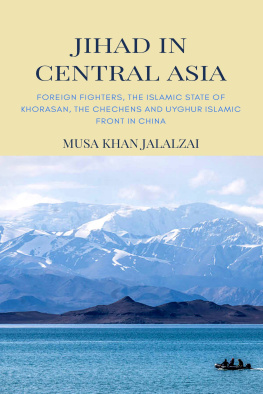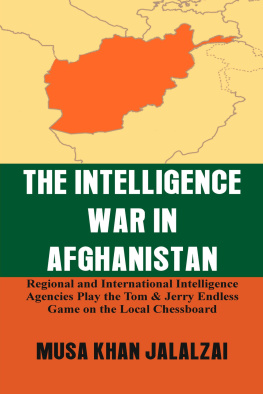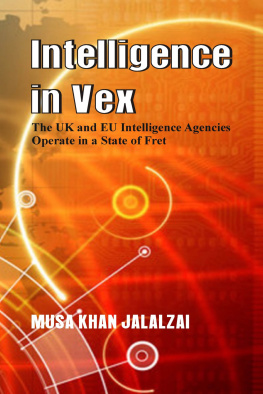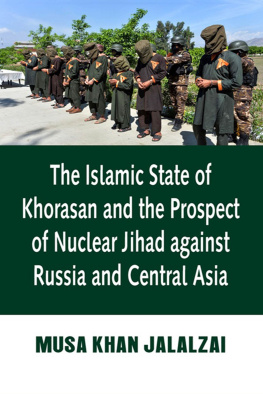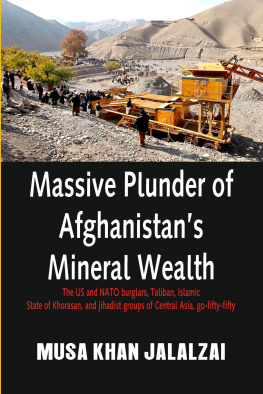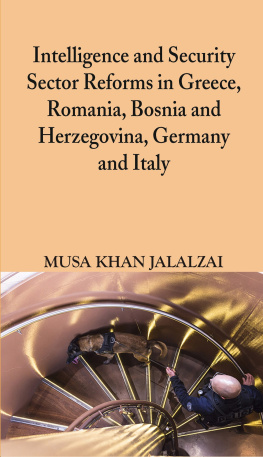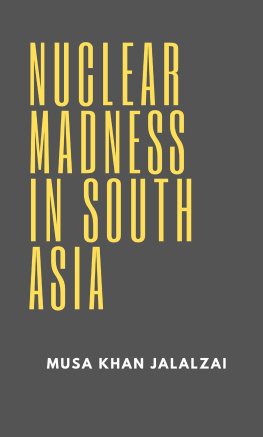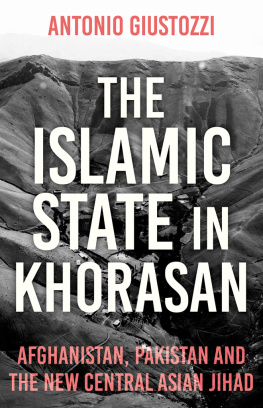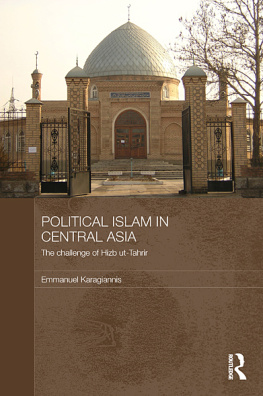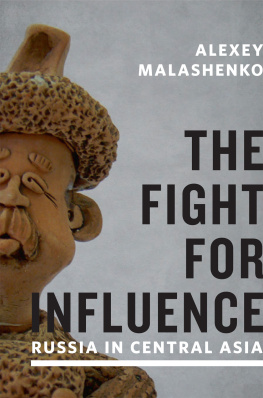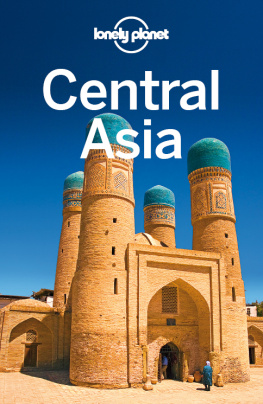Published by
Vij Books India Pvt Ltd
(Publishers, Distributors & Importers)
2/19, Ansari Road
Delhi 110 002
Phones: 91-11-43596460, 91-11-47340674
Mobile: 98110 94883
e-mail:
www.vijbooks.com
Copyright 2020, Author
ISBN: 978-93-89620-26-9 (Hardback)
ISBN: 978-93-89620-28-3 (ebook)
All rights reserved.
No part of this book may be reproduced, stored in a retrieval system,
transmitted or utilised in any form or by any means, electronic,
mechanical, photocopying, recording or otherwise, without the prior
permission of the copyright owner. Application for such permission
should be addressed to the publisher.
The Washington Post revelations about the failure of American army in Afghanistan demonstrate that no state can be vanquished, stooped and genuflected by nuclear missiles, extrajudicial killings, war crimes and Mother of Bombs. The Paper warned that senior US officials were lurking the truth of their failure in Afghanistan. Every data-point was altered to present the best picture possible, Bob Crowley, an Army colonel who served as a senior counterinsurgency adviser to US military commanders in 2013 and 2014, told government interviewers. Surveys, for instance, were totally unreliable but reinforced that everything we were doing was right and we became a self-licking ice cream cone, Bob said. Pentagon and CIA in the Bush, Obama and Trump administrations were painting different pictures of their failure in Afghanistan.
The CIA and Pentagon spent more than $1 trillion in Afghanistan, but couldnt succeed to bring Gallus-Gallus chicken to the White House. According to the Washington Post, that the 2,000 pages interviews with more than 400 generals, diplomats, and other officials directly involved in the war exposed incompetence of so-called superpower that killed innocent Afghans with impunity. Many officials described a sustained effort by the US government to hide the truth from the American public. The Post also released hundreds of pages of previously classified memos about the Afghan war dictated by former US Defence Secretary Donald Rumsfeld.
Unsurprisingly, the war dragged on; making it the longest the United States has ever fought. Negotiations were taking place between the Trump administration and the terrorist Taliban leadership as the US debated whether to withdraw 13,000 troops from Afghanistan with or without a deal with the Terrorists. But U.S. military officials consistently warned against a premature withdrawal from the country, assuring that progress was being made. At least American participation in the war in Afghanistan comes to an end when our interests are met, and I think thatll be met through a negotiated settlement with the Taliban, and I think were seeing some progress, Chairman of the Joint Chiefs of Staff Gen. Mark Milley said.
After a complete failure in Afghanistan, now CIA and Pentagon want to turn Central Asia into a new battlefield. Nationals of the five Central Asian states who joined ISIS in Syria and Afghanistan may possibly serve the interests of the United States when they return to the region. They might inflict huge fatalities on civilian population by taking part in combat on the side of jihadist groups like the Islamic State, and by carrying out terrorist attacks inside and outside their home regions. Most Central Asian states face their greatest risk of domestic instability and violent extremism as a reaction to political repression and counterterrorism policies of their governments. In Central Asia, the focus of Jihadists groups has been the Tajikistan, Turkmenistan and Russian Federation. But it is unclear how many Central Asian fighters will ultimately seek to return to their countries of origin, and if they do, whether any of them will remain committed to ISIS.
Before the rise of ISIS, the Islamic Movement of Uzbekistan (IMU) was the main Central Asian extremist organization in the field. Its base of operations is in Afghanistan and Pakistan. Central Asian fighters linked to ISIS headquarters in Syria also participated in acts of terrorism in other countries. The ISIS has previously restrained from getting involved in attacks in Central Asia as the groups leadership emphasised that attacking this region was not the highest priority. In July 2018, five Tajik men killed four foreign cyclists in a car-ramming attack, accompanied by an on-foot gun and knife assault in the Khatlon province of Tajikistan. The presence of Daesh in Iraq and Afghanistan, and participation of Central Asian jihadists in it prompted consternation in the region. In Syria, the radical Islamic militants from Central Asia established terrorist organisations of their own. These terrorists have Salafi-Wahhabi inclinations and are among the backers of al-Qaeda, al-Nusra Front, and Daesh group. In his Diplomat analysis (20 September 2016), Uran Botobekov, documented videos and extrajudicial killing in Iraq and Syria:
Recently, Central Asians saw on YouTube a terrible video of a teenager, Babur Israilov from Jalal-Abad in southern Kyrgyzstan, on his way to becoming a suicide bomber. In the video, Babur cries before being sent to his death in an armoured car laden with explosives in Fua, Syria. One of the fighters gathered around encourages him, saying in Uzbek that Satan intervenes at crucial moments to confuse a Muslims mind, so he should think only of Allah. Further in the video sentimental Arabic music plays, the armoured personnel carrier moves, and, at the fatal moment, the bomb explodes. According to Radio Free Europe/Radio Liberty, Babur Israilov was a member of an extremist group of UzbeksImam Bukhari Jamaatwhich fights alongside Jabhat al-Nusra in Syria. Just like the father of the British boy JoJo, resident of Suzak district in the Jalal-Abad region of Kyrgyzstan Tahir Rahitov saw his son Babur via video. According to Tahir, his wife died in 1995 and the boy was raised by his grandmother. In November 2013 Babur left for Russia in search of work. In March 2014 he arrived in Syria via Turkey, joined Imam Bukhari Jamaat, and fought alongside Jabhat al-Nusra against the government of Bashar al-Assad.
The four Central Asian States (Kyrgyzstan, Tajikistan, Kazakhstan, and Uzbekistan) security agencies and government have adopted several law and order measures to effectively fight against radicalization, but some states failed to intercept the infiltration of the ISIS militants from Afghanistan into the region. The power structures, social institutions and local authorities of the Central Asian states are unable to work with radical Islamic groups. Analyst Uran Botobekov has also warned that presence of Central Asian minors in Daesh ranks might possibly cause huge fatalities when they translate their ideologies into violent actions:
According to the special services of Kyrgyzstan, about 140 minors have been taken from Kyrgyzstan to training camps in Iraq and Syria. The vast majority of children are under the age of 14, with an estimated 85 children under the age of 10. Authorities have not reported how many children have come to the Islamic State from Kazakhstan, Tajikistan, Turkmenistan, and Uzbekistan. According to human rights organizations more than 600 children from Central Asia are in ISIS-controlled areas of Iraq and Syria. Most children were brought into the conflict zone by their parents. According to various estimates, there are 4,000 Central Asians fighting with various groups in Iraq and Syria. Estimates of the number of children from the former republics of the Soviet Union vary, and no one can pinpoint the exact number.

